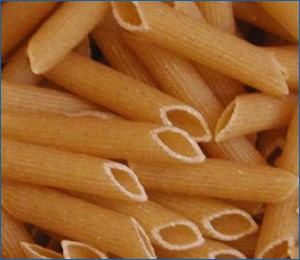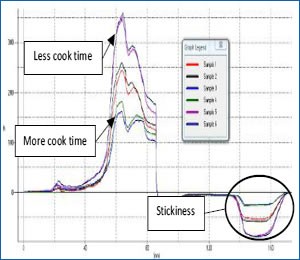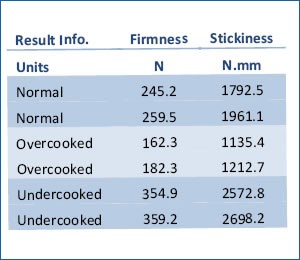Texture Analysis SolutionsPasta Firmness and Cook Profile
Highlights
- Objective comparative test to check any pasta variety or supply for mouthfeel against known quality grades
- Repeatable and quick test method to profile texture to cook time using a software-controlled texture analyzer
- Industry-standard Kramer fixture to compress and shear through and retract from a bulk sample to replicate a chew action
- Quantified hardness and adhesiveness texture attributes correlated to mouthfeel firmness and stickiness as a function of cook time
Situation
 A processor of several different kinds of pasta was looking for a more consistent and less time consuming way to control its outgoing product. Current methods involve extensive sensory testing with trained panels. This is very subjective and often tedious to set up.
A processor of several different kinds of pasta was looking for a more consistent and less time consuming way to control its outgoing product. Current methods involve extensive sensory testing with trained panels. This is very subjective and often tedious to set up.
As with most processed food products, the incoming raw ingredients are constantly changing. The flour that is used differs depending on where it is grown and at what time of the year it is harvested. This causes inconsistencies in the starch and protein levels in the product. Because of this, several different flours are often mixed to produce a constant starting point of the pasta production. Even still, it is a continuous battle to produce the same product from day to day.
Method
 Before testing, enough pasta was cooked to perform several replications. For this particular test, penne pasta was used but this method could be applied to any number of pasta shapes. In order to show a difference in the product, different cook times were used. After the pasta cooked, drained, and cooled it was ready to be tested. 100 grams of pasta was placed in a CS-1 standard shear cell. This cell consists of 10 blades that first compress and then shear through the product. The force required to do this is a good indicator of the firmness of the pasta. Additionally, the negative force caused by the pasta when the blades are retracting is an indication of the stickiness of the sample. Both of these are important factors in the consumer’s overall impression of the product.
Before testing, enough pasta was cooked to perform several replications. For this particular test, penne pasta was used but this method could be applied to any number of pasta shapes. In order to show a difference in the product, different cook times were used. After the pasta cooked, drained, and cooled it was ready to be tested. 100 grams of pasta was placed in a CS-1 standard shear cell. This cell consists of 10 blades that first compress and then shear through the product. The force required to do this is a good indicator of the firmness of the pasta. Additionally, the negative force caused by the pasta when the blades are retracting is an indication of the stickiness of the sample. Both of these are important factors in the consumer’s overall impression of the product.
Significance

• Quick and easy test that gives repeatable, objective results with less effort and time than traditional sensory evaluation.
• Reduces the possibility of downtime due to a product that does not meet quality standards.
• Able to predict how consumers will react to product when results are compared to the sensory panel data
